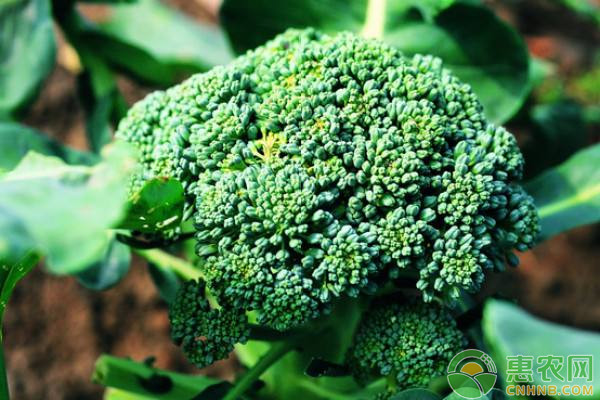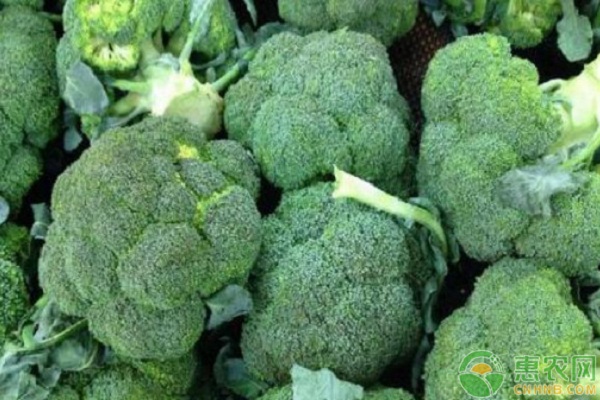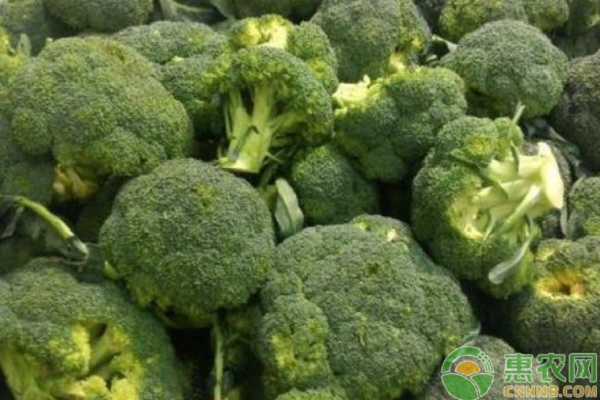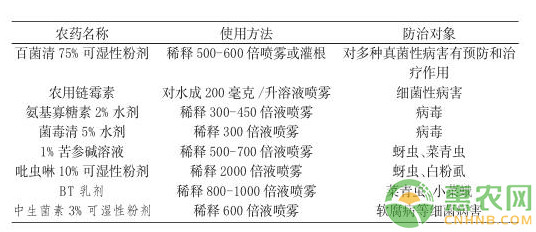How is broccoli planted? At present, the development prospect of broccoli is quite good. In Lingyuan area, according to the local climatic conditions, it is mainly the production of two fields. The following is a compilation of the broccoli cultivation management technology in Lingyuan City. 1 plot and variety selection Loam and sandy loam are more suitable for the growth of broccoli. It is required that the plot should have irrigation and drainage conditions to achieve dry irrigation and argon discharge. The variety is the most popular “excellent†and “Yanxiu†in the international market. These two varieties have good heat and cold resistance, compact flower balls, dark green color, moderate size and strong disease resistance, suitable for cultivation in this area. 2 cultivation season Broccoli can be cultivated in the spring and autumn in the Lingyuan area, with the best quality in autumn. In spring, from March 10 to 15, the seedlings will be planted in protected areas, planted on April 15-20, and harvested in early June. In autumn, from June 25 to July 5, the sunshade net will cover seeding and seedlings, and July 20-31 will be planted in September. Harvest began in the first half. 3 sowing seedlings It is best to use factory-free soil-free seedlings to ensure uniform seedlings, no pests and diseases, and convenient management. The standard for planting seedlings is 4~5 true leaves, the root system is developed, the roots are more, there is no yellow root, the leaves are thick and thick, dark green, high. 10~15 cm, the section is tight. 4 Site preparation and fertilization Choose a plot with high terrain and convenient drainage. 1~2 weeks before planting, the whole land will be cultivated in depth, combined with 1500-2000 kg of fully decomposed organic fertilizer or 2000 kg of chicken manure, 25 kg of ternary compound fertilizer and 2~3 kg of borax. After the rotary tillage, the sputum is 1~2 meters wide, and the length of the raft is determined by the length of the ground. It is best to ridge the ridge. The ridge distance is 50 cm and the plant spacing is 40 cm. 3,000 to 3,300 seedlings per acre. Or a small sorghum with a height of 12 to 15 cm and a width of 50 to 60 cm. Planted in two rows, with a spacing of 40 to 50 cm. Spray the seedlings before planting, and take care not to damage the roots when taking the seedlings. Planting seedlings should not be too deep. The soil and the nursery can be leveled together. When planting the seedlings, do not squeeze the seedlings with force. After planting, timely plant the water to promote the seedlings. 5 Fertilizer management 7 to 10 days after broccoli planting, the first top dressing, 15 kg of potassium sulfate compound fertilizer; the second top dressing in the early stage of broccoli, 10 kg of urea, 7.5 kg of potassium sulfate, while spraying 0.05 % to 0.1% borax solution or potassium dihydrogen phosphate solution to prevent empty stems from occurring. The third top dressing is applied with compound fertilizer or diammonium + potassium sulfate 20 kg/mu in the flower development period. Broccoli is not drought-tolerant or resistant to phlegm, and the soil is kept dry during the entire growth period. Pay attention to the timely irrigation of water during the drought, and discharge the water in the field in the rainy season. Especially during the broccoli harvest period, the water supply should be ensured to make the flower buds grow tight. Broccoli plants are tall and require a large amount of fertilizer and water. Although the soil requirements are not strict, it is better to use loam with good drainage and strong fertilizer and water retention. Broccoli absorbs large amounts of trace elements such as boron, magnesium and molybdenum. Boron deficiency affects yield and quality. Therefore, the application of trace elements, especially before buds, plays a significant role in high yield and quality. Broccoli is mainly based on the main flower ball, so the lateral buds that grow out should be removed manually in time to avoid affecting the main ball nutrition and reducing the main ball yield. Especially for export products, side buds should be removed to ensure the quality and appearance of broccoli. In the timely removal of weeds in the field before the broccoli is closed, it is generally combined with watering and fertilization, and cultivating 2 to 3 times. 6 pest control 6.1 Black rot Symptoms: Seedlings, cotyledons and heart leaves of the diseased plants become black and withered. Most of the leaves of the adult plants occur in the leaf margin, showing a "V"-shaped yellow-brown lesion, and the edge of the lesion is yellowish. In severe cases, the leaf margin is damaged in many places, and the whole leaf is dead. Incidence conditions: The disease is a bacterial disease. Through rainwater, irrigation field operations, pest propagation or seed transmission. The development temperature of the pathogen is 25~30 °C, and the incidence of high temperature and high humidity is serious. In addition, continuous cropping, extensive management, and serious pests and diseases can aggravate the disease. Control methods: field management to cultivate strong seedlings, timely cultivating and weeding, rational supply of water and fertilizer, and timely removal of diseased plants. Chemical control: In the early stage of the disease, spray with 3% carbendazim wettable powder 600 times solution or 2% chrysanthemum water 600 times solution, spray once every 7 days, even spray 2~3 times. 6.2 Black spot Symptoms: Mainly damage to leaves, petioles, pedicels and pods, seedlings and adult plants can be affected. The leaves are damaged and initially appear as round chlorotic spots. When enlarged, the middle is dark brown, the edges are light green, with or without obvious wheel marks. The surface is dense with black mildew when wet. Incidence conditions: The disease is introduced by fungi, and the onset temperature is 17~20 °C, and the incidence of high temperature and high humidity is serious. Control method: In the early stage of drug control, spray 65% ​​sensitized zinc 600 times solution or 70% mancozeb 500 times solution or 75% chlorothalonil WP 500 times solution or 100 ml / liter of agricultural anti-120 or more resistant mold 50 mg / liter, etc., once a week, even spray 2~3 times. 6.3 Downy mildew Symptoms: Both seedlings and adult plants can develop disease. At the beginning of the disease, the initial yellow-green plaques on the leaf surface showed no obvious margins, and white moldy spots appeared on the back of the leaves. After expansion, they were polygonal spots due to the restriction of veins, and changed from light yellow to light brown. When the disease is severe, the lesions are smeared with yellow. Incidence conditions: The disease is caused by fungi. The disease is prone to epidemic when the average temperature is around 16 °C, and yellow spots are easily formed at 24 °C. The disease requires strict humidity, and it is rainy, foggy, and exposed, the temperature is high and low, and the temperature difference between day and night is serious. Control methods: field management chooses high ground, convenient drainage of the land to apply sufficient fertilizer, reasonable topdressing, increased application of phosphorus and potassium fertilizer, suitable seedlings, reasonable irrigation, can reduce the occurrence of this disease. Chemical control: use 25% toxic mycorrhizal WP 800 times solution or 65% daisen zinc powder 500 times solution or 75% chlorothalonil WP 600 times solution or 40% ethyl phosphide aluminum WP 300 Double or 50% sterilized Dan WP 500 times, once a week, even spray several times. 6.4 Root rot In the early stage of the disease, it is treated with agricultural streptomycin 3000 times solution or 75% chlorothalonil WP 600 times solution. 6.5 squatting disease In the early stage of the disease, it is controlled by spraying 64% of anti-virus cockroaches 500 times or 53% of gold leidomir. 6.6 Control of Pieris rapae, Plutella xylostella In the early stage, spray with 5% Ruijinte 1500-2000 times solution or 15% hit 3000 times solution. Apply 2.5% dish like 1000 times solution or BT500 times solution at the beginning of the ball. 6.7 Controlling mites It should be sprayed with 50% of cockroach emulsifiable concentrate 1000~1500 times in time; 40% of lycopene emulsifiable concentrate 500 times, once a week, even sprayed several times. Avoid using dimethoate after flower buds appear. 6.8 Control of beet armyworm, Spodoptera litura Use 10% to remove 1500 times solution or 5% card to kill 1000 to 1500 times solution in the evening spray. Table 1 Main medicinal agents and methods of use of broccoli pest control 7 harvesting Broccoli is mainly exported, requiring the flower ball to be firm, the color is dark green, the surface is intact, no pests and diseases, no deformities and mechanical damage. Harvest when the flower ball grows to 200~250 grams. Harvesting requires 4 to 5 leaves, height 16 to 18 cm (from the top of the flower to the lower end of the stem), and the diameter of the flower ball is 11.5 to 13 cm. Avoid high temperature during harvesting, preferably at 6-8 o'clock in the morning, after picking up the basket, send it to the processing plant for pre-cooling treatment, then put it into the foam incubator and add crushed ice to keep it fresh. The above is all the contents of today. Farmers who have planted broccoli are welcome to learn a lot. Friends who want to plant broccoli can learn more and accumulate experience! Lose Weight Plant Extract,Poria Extract,Seaweed Extract,Codonopsis Pilosula Extract Fufeng Sinuote Biotechnology Co.,Ltd. , https://www.sntbiology.com


